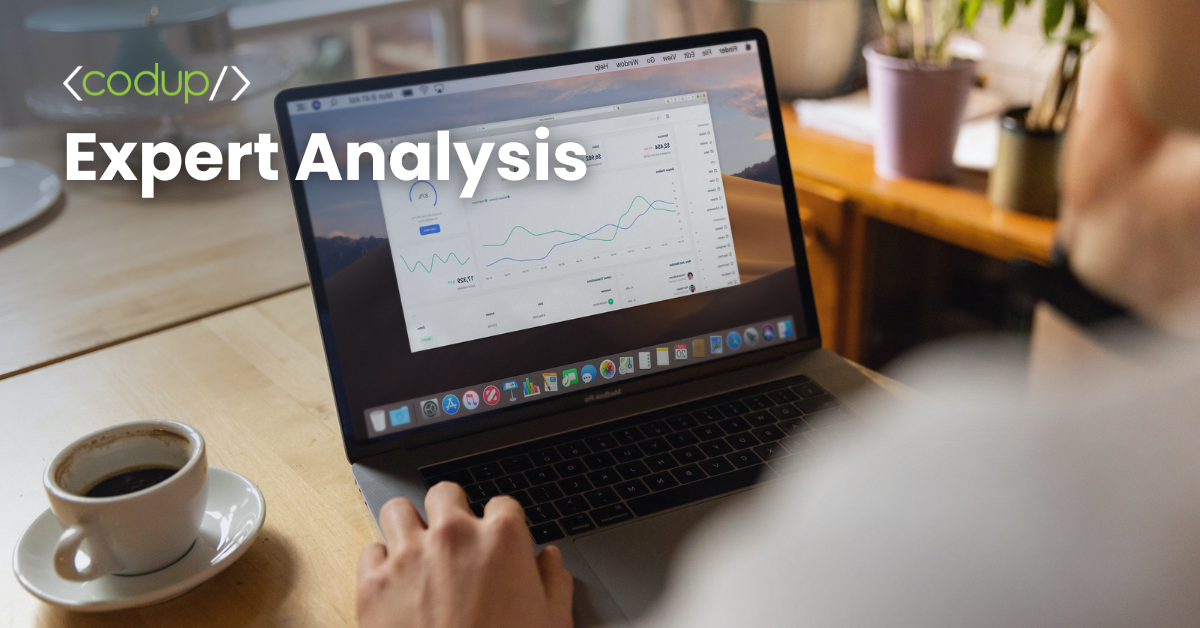Mapping Offline to Online: How B2B eCommerce for Manufacturers Can Digitize Every Step of Their Complex B2B Sales Process
Why B2B eCommerce for Manufacturers Needs a Rethink in 2025
Manufacturers are facing a tough time generating leads through channels that once brought consistent results. Trade shows, cold calls, cold emails, and in-person visits, all once staples of B2B sales, are delivering diminishing returns in today’s market.
But this shift isn’t surprising. B2B buyers have evolved. They’re no longer relying on sales reps as their first source of information.
80% of buyers now start their purchase journey online, researching independently before ever engaging with a salesperson.
To stay competitive, manufacturers must leverage digital tools and strategies to map their offline as well.
Read more: Customer Portals: The Key to Stronger B2B Relationships in the Digital Era
B2B Digital Transformation for Manufacturers: A Step-by-Step Approach
However, this transition isn’t always simple. Every business has its own nuances and operational details that inform what specific solutions it needs to transform its processes.
This guide serves as a blueprint to help manufacturers structure their digital transformation initiatives.
Since the B2B sales process involves various stages, we’ve organized this guide step-by-step.
Stage #1: Prospecting
Client hunting used to be an entirely in-person activity, where salespeople would rely on tactics like door-to-door sales. As competition increases in every niche, it has become increasingly complex to scale these in-person activities and achieve a satisfactory ROI.
This is where inbound online channels, such as SEO, Google Ads, and social media promotions, come in.
These channels are easier and less expensive to scale than a human salesforce.
The good thing is that buyers are increasingly relying on these channels to initiate their buying journey.

That means your brand’s visibility on search engines, social platforms, and digital directories is now the new “cold call.”
Here’s how manufacturers can modernize prospecting:
- Build a content-rich website with detailed product information, specs, and use cases
- Create interactive search experiences using faceted search and filters to help buyers easily explore your catalog
- Invest in SEO to rank for high-intent keywords your ideal customers are searching for
- Run targeted Google Ads or Meta campaigns aimed at decision-makers in specific verticals
- Use landing pages and lead magnets (e.g., downloadable catalogs, configurators, or price estimators) to capture leads
- Track visitor behavior with analytics tools to identify high-interest products or pages
- Create awareness on social media through UGC-style video content that feels authentic and resonates with your target audience, especially across LinkedIn, Instagram, or TikTok, depending on your target persona.
- Engage in relevant industry forums and communities. Facebook groups, LinkedIn groups, and Slack channels can be excellent platforms to answer questions, share insights, and establish your brand as a helpful expert.
- List your business on relevant directories and product marketplaces to increase discoverability and generate high-intent traffic.
By shifting prospecting efforts online and utilizing scalable, measurable tactics, manufacturers can consistently generate qualified leads without relying on outdated methods or unpredictable in-person events.
Stage #2: Lead Qualification
Lead qualification used to be a process driven by gut instinct, personal judgment, and time-consuming back-and-forth conversations.
Sales teams often spend valuable hours chasing leads that are never going to convert, simply because there is no structured way to gauge interest or readiness to buy.
Here are some solutions that make this process more efficient and data-driven:
- Automated lead scoring. Manufacturers can assign points to leads based on factors like job title, industry, company size, and behavior.
- Tools like ActiveCampaign, Zoho CRM, or Marketo can track actions such as email opens, website visits, and downloads, giving clear signals about a prospect’s intent and level of engagement.
- Progressive profiling forms take this a step further by collecting lead information in stages. Instead of asking for everything upfront, these innovative forms gradually gather more details with each interaction, allowing you to build a richer profile over time without overwhelming the user.
When integrated with marketing automation platforms, this data helps prioritize follow-ups, trigger personalized nurture sequences, and even direct hot leads to the sales team.
This means less time wasted and more deals closed.
Stage #3: Solution Presentation
Traditionally, manufacturers relied on in-person meetings, printed catalogs, and physical product samples to present their solutions.
While effective in some cases, these methods are time-consuming, expensive to scale, and often limited by geographical and logistical constraints.
With digital solutions, manufacturers can deliver rich, immersive product experiences online, without needing to be in the same room as the buyer.
Here are some digital solutions that can help digitize processes at this stage of the sales journey:
- Interactive product configurators enable prospects to customize materials, dimensions, finishes, and other features in real-time, giving them a sense of ownership early in the buying journey.
- 3D models and AR/VR demos (using platforms like Sketchfab, Repspark, or Threekit) enable users to explore products from every angle, even in their environment, using a mobile device.
- For more tailored selling, personalized video walkthroughs can showcase how a solution fits a specific use case or application.
- Sampling, once managed through lengthy conversations, phone calls, or field visits, can now also be digitized. A simple “Request a Sample” feature on your website allows buyers to order samples directly, often as part of a gated form that also captures lead data.
Stage #4: Quoting & Pricing
Quoting used to be a highly manual and time-consuming process. Sales teams would rely on spreadsheets, back-and-forth emails, and custom price calculations that often led to delays, inconsistencies, and errors, especially when dealing with complex product configurations or volume-based pricing.
This not only slowed down the sales cycle but also created friction for buyers who had to wait days (or longer) to receive a quote, often after speaking to multiple people.
Now, manufacturers can move this entire process online, making it faster, more accurate, and easier for both sales teams and buyers.
These digital solutions enable digital transformation at this stage of the B2B sales journey. To see how manufacturers can streamline complex sales steps and reduce friction through self-service, explore our insights on guided buying in B2B eCommerce.
- CPQ (Configure, Price, Quote) systems enable reps or customers to create custom product configurations and generate quotes instantly, based on predefined pricing rules.
- Dynamic pricing models can adjust quotes based on factors such as quantity, region, lead time, or other real-time variables, ensuring competitiveness while maintaining optimal margins.
- With self-service portals, buyers can request or even generate their quotes without needing to speak to a salesperson, a major convenience in today’s self-serve B2B landscape.
- Tools like Salesforce CPQ, PandaDoc, and DealHub help automate quote generation, track version history, and even enable electronic signatures, turning a process that often creates a bottleneck into a seamless digital experience.
By digitizing quoting and pricing, manufacturers can reduce turnaround time, improve pricing consistency, and deliver a more modern, responsive buying experience, without sacrificing complexity or control.
Stage #5: Negotiation & Follow-Up
In the traditional B2B sales cycle, negotiation and follow-up were often hindered by lengthy email threads, missed calls, and delays in feedback.
With multiple stakeholders involved, it could take weeks just to finalize a few key details, especially when documents were scattered across inboxes or revisions weren’t properly tracked.
The following digital solutions can make negotiation and follow-up faster, more collaborative, and significantly more organized:
- Shared deal rooms bring all stakeholders into a single digital space where documents, pricing, and terms can be reviewed together.
- Real-time document collaboration eliminates the version-control chaos by allowing comments, edits, and approvals within a single live file.
- Automated follow-up sequences ensure timely nudges are sent, whether to remind a prospect about a proposal, request feedback, or re-engage a cold lead, without requiring manual effort from your sales team.
By streamlining this stage, manufacturers can maintain momentum and reduce the risk of deals stalling during critical final conversations.
Stage #6: Closing the Deal
Closing a deal used to mean printing contracts, collecting wet signatures, scanning documents, and sending couriers, all of which added days (or even weeks) to the final step of the sales process.
Today, manufacturers can close deals in minutes, not days, by embracing fully digital workflows.
- E-signature tools, such as DocuSign or HelloSign, enable prospects to sign contracts securely from any device.
- Instant contract generation from templates ensures terms are consistent, compliant, and ready to go as soon as the buyer is.
- In some cases, integrated payment systems like Stripe can even collect deposits or full payments at the point of signature, streamlining handoff to production or delivery.
Digitizing the deal-closing process eliminates friction, reduces errors, and creates a seamless, modern experience that instills confidence at the most critical stage of the buyer journey.
Stage #7: Post-Sale Service
Traditionally, post-sale service for manufacturers meant phone-based support, scattered spreadsheets, and manual reordering, all of which made it hard to retain customers and provide consistent follow-up.
Online, post-sale engagement becomes far more scalable, personalized, and efficient.
- Customer portals enable buyers to view their order history, request reorders, and track support tickets all without needing to call or email.
- Automated onboarding workflows ensure that new clients receive the necessary information, training, and setup guidance promptly.
- AI-powered chat and ticketing systems (using platforms like Zendesk, Intercom, or Freshdesk) help triage issues instantly and escalate only what truly needs human attention.
- One particularly impactful enhancement is real-time order updates, which provide buyers with visibility into the manufacturing process. These updates can display order status, production stages, estimated dispatch dates, and tracking information, offering transparency that builds trust and reduces anxiety, especially for high-value or custom orders.
By digitizing this stage, manufacturers can reduce churn, increase repeat orders, and build long-term customer relationships, without overloading their support teams.

Building a Scalable Future with B2B eCommerce for Manufacturers
Digital transformation doesn’t mean overhauling your business overnight it means aligning the way you sell with the way your buyers want to buy.
By digitizing each stage of your sales process from prospecting and quoting to post-sale service you can create scalable, efficient systems that reduce friction for your customers and free up your team to focus on high-value work.
B2B eCommerce for manufacturers isn’t just about putting products online. It’s about designing an experience that reflects the complexity of your operations and the sophistication of today’s B2B buyer.
If you’re ready to move beyond one-size-fits-all platforms and build a system tailored to your workflows, sales structure, and buyer expectations Codup can help.
Frequently Asked Questions
B2B eCommerce for manufacturers refers to online platforms and digital workflows that allow manufacturers to sell directly to other businesses. Unlike B2C, it often includes features like account-based pricing, bulk ordering, custom quoting, and ERP integration designed to match the complexity of industrial and wholesale buying processes.
Digital transformation helps manufacturers stay competitive by modernizing how they generate leads, present products, handle pricing, and manage post-sale service. B2B eCommerce for manufacturers allows them to streamline operations, reduce manual processes, and match how today’s B2B buyers prefer to shop online and self-serve.
Manufacturers can digitize complex B2B sales processes using tools like product configurators, CPQ systems (Configure-Price-Quote), lead scoring engines, customer portals, and shared deal rooms. These tools map each offline sales step from prospecting to post-sale support into scalable, automated digital workflows.
B2B eCommerce platforms automate the quoting process through CPQ tools and dynamic pricing engines. Instead of relying on spreadsheets and back-and-forth emails, manufacturers can generate accurate, consistent quotes instantly either through sales teams or self-service portals—based on customer tier, volume, and configuration.
Yes. Modern B2B eCommerce platforms for manufacturers support extensive product catalogs with features like faceted search, filters, variant selectors, and product configurators. These tools make it easier for buyers to explore SKUs, compare specs, and build custom orders without manual support.
Self-service portals enable B2B buyers to manage their accounts, reorder products, track shipments, and even generate quotes all without contacting a salesperson. For manufacturers, this reduces operational load and increases buyer satisfaction by offering transparency and control over complex orders.
Contributors
-

Calister Maloney
writer
Content Lead


